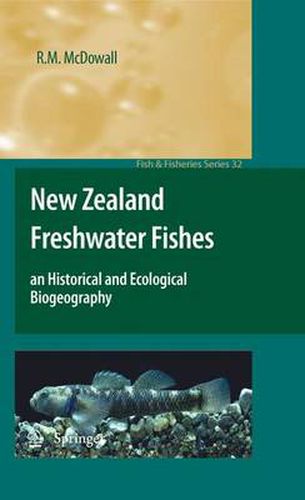Readings Newsletter
Become a Readings Member to make your shopping experience even easier.
Sign in or sign up for free!
You’re not far away from qualifying for FREE standard shipping within Australia
You’ve qualified for FREE standard shipping within Australia
The cart is loading…






This title is printed to order. This book may have been self-published. If so, we cannot guarantee the quality of the content. In the main most books will have gone through the editing process however some may not. We therefore suggest that you be aware of this before ordering this book. If in doubt check either the author or publisher’s details as we are unable to accept any returns unless they are faulty. Please contact us if you have any questions.
In many ways, this book is the culmination of more than four decades of my exp- ration of the taxonomy, biogeography and ecology of New Zealand’s quite small freshwater fish fauna. I began this firstly as a fisheries ecologist with the New Zealand Marine Department (then responsible for the nation’s fisheries research and mana- ment), and then with my PhD at the Museum of Comparative Zoology at Harvard University, Cambridge, MA, USA in the early-mid 1960s. Since then, employed by a series of agencies that have successively been assigned a role in fisheries research in New Zealand, I have been able to explore very widely the natural history of that fauna. Studies of the fishes of other warm to cold temperate southern lands have followed, particularly southern Australia, New Caledonia, Patagonian South America, the Falkland Islands, and South Africa and, in many ways, have provided the rather broader context within which the New Zealand fauna is embedded in terms of geography, phylogeny, and evolutionary history, and knowing this context makes the patterns within New Zealand all the clearer. An additional stream in these studies, in substantial measure driven by the beh- ioural ecology of these fishes round the Southern Hemisphere, has been exploration of the role of diadromy (regular migrations between marine and freshwater biomes) in fisheries ecology and biogeography, and eventually of diadromous fishes wor- wide.
$9.00 standard shipping within Australia
FREE standard shipping within Australia for orders over $100.00
Express & International shipping calculated at checkout
This title is printed to order. This book may have been self-published. If so, we cannot guarantee the quality of the content. In the main most books will have gone through the editing process however some may not. We therefore suggest that you be aware of this before ordering this book. If in doubt check either the author or publisher’s details as we are unable to accept any returns unless they are faulty. Please contact us if you have any questions.
In many ways, this book is the culmination of more than four decades of my exp- ration of the taxonomy, biogeography and ecology of New Zealand’s quite small freshwater fish fauna. I began this firstly as a fisheries ecologist with the New Zealand Marine Department (then responsible for the nation’s fisheries research and mana- ment), and then with my PhD at the Museum of Comparative Zoology at Harvard University, Cambridge, MA, USA in the early-mid 1960s. Since then, employed by a series of agencies that have successively been assigned a role in fisheries research in New Zealand, I have been able to explore very widely the natural history of that fauna. Studies of the fishes of other warm to cold temperate southern lands have followed, particularly southern Australia, New Caledonia, Patagonian South America, the Falkland Islands, and South Africa and, in many ways, have provided the rather broader context within which the New Zealand fauna is embedded in terms of geography, phylogeny, and evolutionary history, and knowing this context makes the patterns within New Zealand all the clearer. An additional stream in these studies, in substantial measure driven by the beh- ioural ecology of these fishes round the Southern Hemisphere, has been exploration of the role of diadromy (regular migrations between marine and freshwater biomes) in fisheries ecology and biogeography, and eventually of diadromous fishes wor- wide.